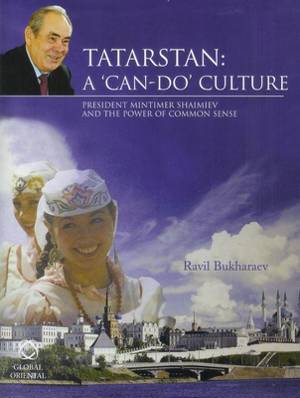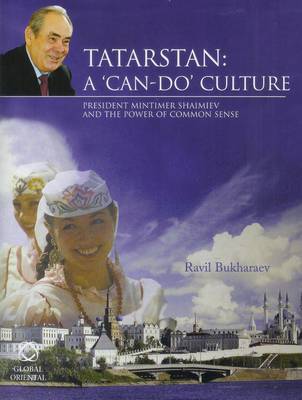
- Afhalen na 1 uur in een winkel met voorraad
- Gratis thuislevering in België vanaf € 30
- Ruim aanbod met 7 miljoen producten
- Afhalen na 1 uur in een winkel met voorraad
- Gratis thuislevering in België vanaf € 30
- Ruim aanbod met 7 miljoen producten
Zoeken
Tatarstan: A 'Can-Do' Culture
President Mintimer Shaimiev and the Power of Common Sense
Ravil Bukharaev
Paperback | Engels
€ 164,95
+ 329 punten
Omschrijving
In 1994, the term 'Tatarstan model' came into use to describe the path which one of Russia's constituent republics had adopted during the unprecedented conditions of its transformation from a Soviet-period pseudo-autonomous entity into a democratic market-economy state. Since then, this particular model of development has attracted increasing attention from both domestic Russian and international observers, not least on account of its enduring ethnic and religious multiculturalism. Focusing as it does on one of the most interesting and unusual regional examples of the Russian market transformation, successfully piloted by the republic's long-serving President Mintimer Shaimiev, this book also argues that whilst there may be no third way between democracy and tyranny, also in economic terms, there may be and, indeed, are different forms of successful transition not necessarily foreseen or properly understood by Western observers.
Specificaties
Betrokkenen
- Auteur(s):
- Uitgeverij:
Inhoud
- Aantal bladzijden:
- 236
- Taal:
- Engels
Eigenschappen
- Productcode (EAN):
- 9781905246458
- Verschijningsdatum:
- 26/10/2006
- Uitvoering:
- Paperback
- Formaat:
- Trade paperback (VS)
- Afmetingen:
- 182 mm x 245 mm
- Gewicht:
- 653 g

Alleen bij Standaard Boekhandel
+ 329 punten op je klantenkaart van Standaard Boekhandel
Beoordelingen
We publiceren alleen reviews die voldoen aan de voorwaarden voor reviews. Bekijk onze voorwaarden voor reviews.








